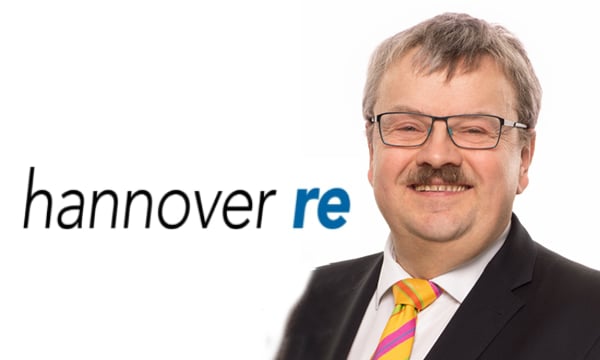Hannover Re shrinks K-Cessions to $757m, but could have placed more: Ludolphs

Hannover Re placed its K-Cessions quota share sidecar at US $757 million in size for 2024, shrinking the structure by 9% over the prior year. In an interview, Henning Ludolphs explained that despite some changes, the company has sufficient retrocession to take advantage of the hard reinsurance market environment this year.
Last year, Hannover Re’s retrocession program renewal for 2023 consisted of a K-Cession quota share placement sized at US $831 million, a whole account excess-of-loss retro placement of EUR 387 million in size, as well as EUR 100 million of catastrophe swaps and an aggregate excess-of-loss retro layer of EUR 71 million in size.
We’d previously reported that the reinsurer was expecting the retro placements would fluctuate in size, with the K-Cession quota share sidecar placement one area seen as likely to shrink a little for 2024.
This year, we reported early in January that Hannover Re renewed its whole account retrocession placement coverage for 2024 roughly flat, at around EUR 387 million of limit again.
Now, in an interview with Artemis, Henning Ludolphs, Managing Director, Retrocession and Capital Markets at Hannover Re, has confirmed the rest of the retrocession arrangements and, as well as the slightly smaller K-Cession placement for 2024, the company has also not renewed its catastrophe swap this year.
Ludolphs explained that overall the retrocession renewal market was deemed to be relatively “stable” this year, saying, “There was no shortage of capacity but retrocessionaires, including ILS investors, showed underwriting discipline.”
On the dynamics seen in the insurance-linked securities (ILS) market around this year’s renewal and how that played into the retro renewals, Ludolphs said, “Though interest in catastrophe bonds has increased, the larger part of ILS investments is still in illiquid strategies, mainly collateralised reinsurance.
“Our observation has been that most ILS retro capacity providers more or less renewed their shares.”
Ludolphs went on to discuss the K-Cession placement for 2024, saying, “Our K-Quota Share placement changed from USD 831 million in 2023 to USD 757 million in 2024, which was done on purpose.”
He further explained that, “We could have placed more, but our retro program overall not only suffices our needs to steer our net risk appetite to the desired level but also gives us the flexibility to take advantage of the hard market reinsurance environment during 2024.”
We asked Ludolphs about the rest of Hannover Re’s retrocession program for 2024.
He noted that, “We have not renewed our catastrophe swap,” going on to say that, “this is not a strategic element of our program but more a case by case consideration.”
The other element of Hannover Re’s retro reinsurance is an aggregate cover, which was renewed and on this Ludolphs said, “Our Aggregate Excess of Loss cover was renewed at a stable volume of EUR 71 million.”
The K-Cessions, or K quota share, arrangement, which is a multi-line sidecar vehicle, is a long-standing feature of Hannover Re’s retro and remains core to how the reinsurance firm works with the capital markets on its retro protections.
“For many years our K-Quota Share has been the backbone of our retrocession program – it actually goes back to the first ever ILS transaction in 1994 on the P&C side where Hannover Re transferred risks directly to capital markets. The K-Quota Share, in particular in combination with our Whole Account and Aggregate XL covers, has proven to be valuable to us and we do not see reasons to change this. Needless to say there are always some adjustments and modifications addressing actual developments,” Ludolphs told us.
On the participation of the capital markets, across the Hannover Re retro tower, Ludolphs told us that, “Our panel of retrocessionaires is generally fairly stable with only few changes year on year.
“More than two thirds of capital is provided by the ILS markets.”
He went on to say that retrocessionaires showed “no shortage of capacity,” but that they approved with renewal with a “disciplined underwriting approach.”
Ludolphs and Hannover Re is watching the market closely and feels that with an expected level of catastrophe and other large losses this year, the ILS market has a chance of further growth in 2024.
“The loss situation during 2024 will be crucial in steering the capacity and market conditions,” he explained. “If the year develops within expectations, we expect a capacity increase of roughly USD 5 – 10 billion for the ILS market in total with respect to volume.”
But, importantly Ludolphs said that he doesn’t think that will be a significant enough flow of new capital to affect the market dynamic too much.
Saying, “We do not think that this will have a significant impact on pricing, terms and conditions as the years until 2022 were characterized by underperformance and as we are still dealing with high inflation and strong uncertainty on geopolitical level.”
Read all of our interviews with ILS market and reinsurance sector professionals here.






